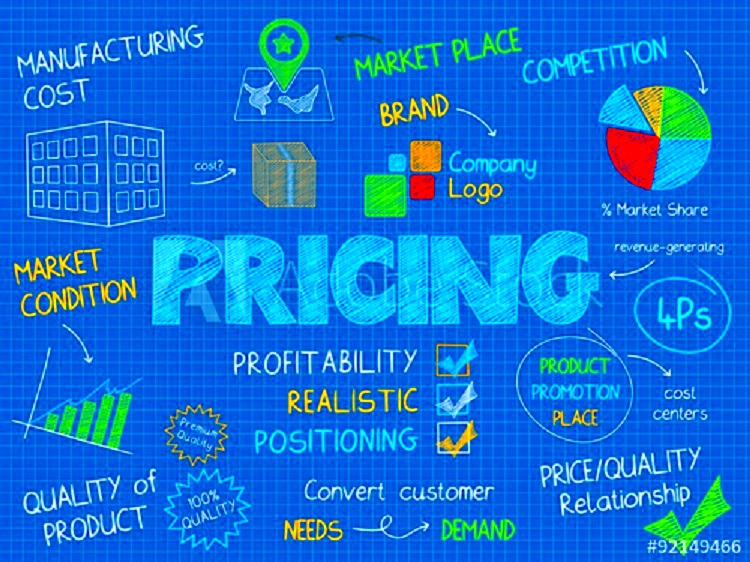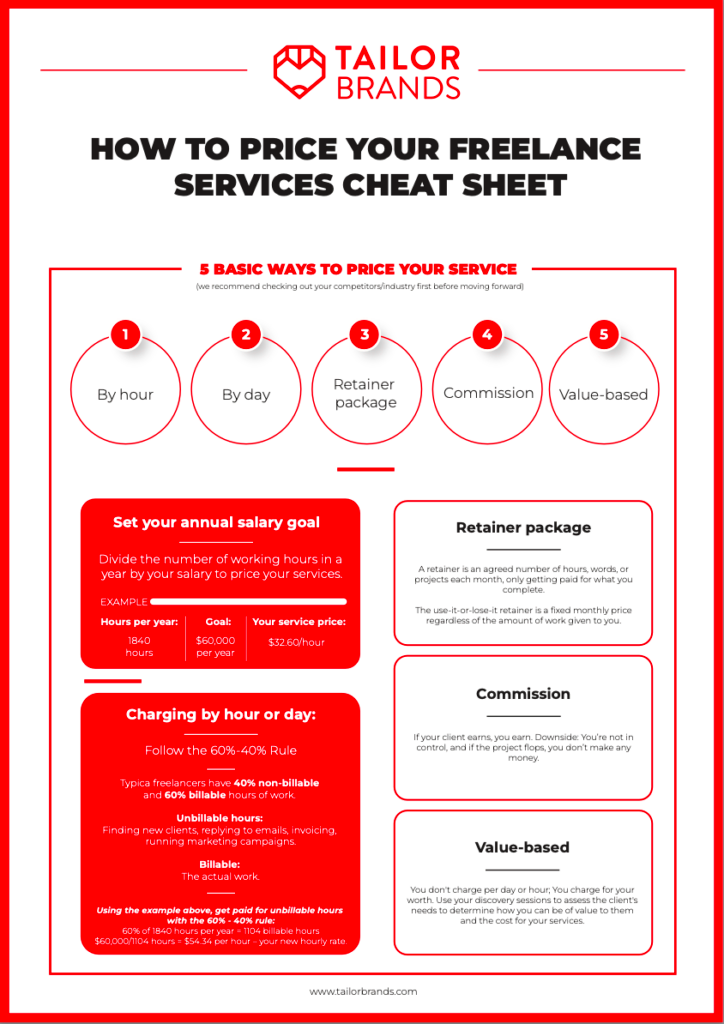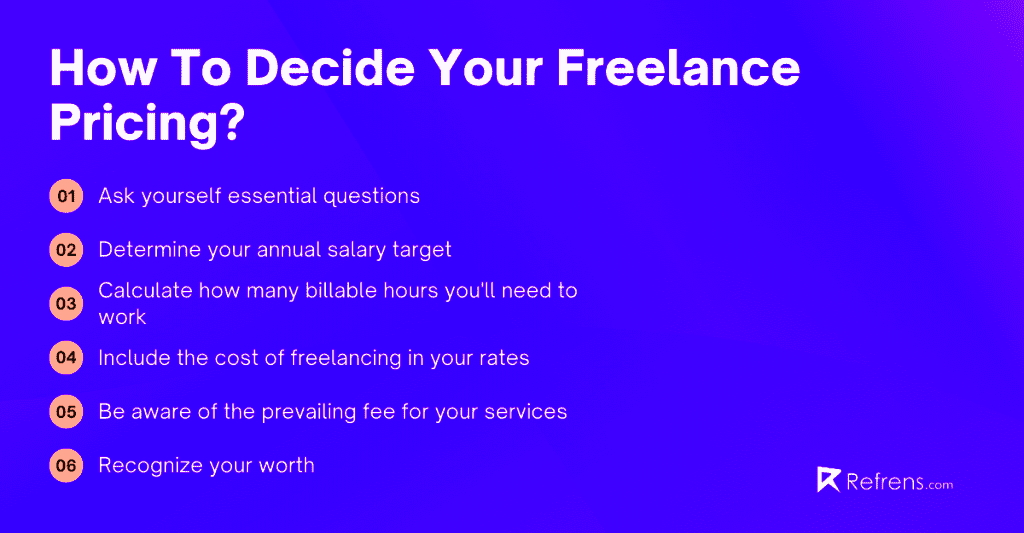Figuring out how to price your freelance work can be a bit tricky at the beginning but it gets easier with time. I can relate to the confusion I felt when I first started freelancing trying to strike the right balance between charging too little and too much. The secret lies in finding a sweet spot that showcases your abilities while also fulfilling your financial requirements.
When you’re entering the freelancing world it’s easy to think that lowering your rates will help you win over clients. But this strategy can backfire as it may cause clients to underestimate the value of your work. Conversely if you set your rates too high you might scare off potential clients. It’s crucial to assess your level of experience, the quality of your work and the current market demand. Additionally keep in mind your living expenses and other freelance related costs like software subscriptions or equipment purchases.
One strategy I’ve discovered is to check out the rates of others in your field. You can explore freelance job boards industry reports or even reach out to other freelancers. This data will provide you with an estimate to help you determine your pricing. Moreover take into account your skills and knowledge – if you bring something to the table it can support a higher rate.
Factors Influencing Freelance Rates

When it comes to setting your freelance rates there are several factors to consider. Being aware of these can assist you in establishing a fair price that accurately reflects the worth of your work. Here are some important factors to keep in mind.
- Experience and Expertise: Your years of experience and level of expertise can significantly influence your rates. More experienced freelancers can typically command higher rates due to their proven track record.
- Project Complexity: The complexity of the project is crucial. More complex projects that require advanced skills or extensive time commitment should be priced higher.
- Client’s Budget: It’s important to consider your client’s budget while setting your rates. Some clients might have tight budgets, and being flexible can help you secure more work.
- Market Demand: High demand for specific services can justify higher rates. Research industry trends to see where your services fit in the current market.
- Location: Geographic location can influence rates. For instance, rates in major metropolitan areas may be higher compared to smaller towns or rural areas.
Based on what I've seen paying attention to these aspects and consistently reassessing your rates as you gain more experience can assist you in remaining competitive and making sure you receive fair compensation for your work.
Also Read This: How Many Accounts Can You Have on Fiverr?
Different Pricing Models for Freelancers

Selecting the pricing strategy can make a significant difference for independent workers. Throughout my journey I’ve tried out different approaches and each comes with its advantages and disadvantages. Let me share an overview of some pricing models you might encounter:
- Hourly Rate: Charging by the hour is straightforward and is often used for projects where the scope may change or isn’t well-defined. This model ensures you’re paid for every hour worked but can be less predictable for clients.
- Fixed Rate: A fixed rate is agreed upon before starting the project. It’s great for projects with a clear scope and timeline. It helps both you and the client know exactly what to expect. However, if the project scope changes, you might end up working more hours than planned.
- Per Project Rate: Charging per project can be beneficial for large, well-defined projects. It allows you to account for the entire project’s complexity and time investment. It’s also easier for clients to budget for.
- Retainer Fee: A retainer fee is a regular payment made by a client to secure your services over a period. It’s a good option for long-term projects or ongoing work and provides financial stability.
Selecting the model that suits you best is based on how you prefer to work the type of projects you handle and your interactions with clients. Try out various approaches to discover the one that aligns with your preferences and meets the needs of your clients.
Also Read This: How to Create a Good Fiverr Account
How to Set Your Freelance Rates
Determining your freelance fees can be a challenging endeavor. I recall my initial experiences as a freelancer when I was burdened by the pressure of valuing my services. It resembled balancing on a wire, uncertain whether my asking price was excessive or insufficient. However with time I've come to realize that establishing your rates involves a mix of recognizing your value and considering market conditions.
Begin by assessing your abilities and background. If you’ve dedicated time perfecting a specific talent or possess expertise, it’s valuable to take that into account when setting your prices. Look at the rates of others in your industry for reference. Remember to consider your expenses like software, tools and office space.
Here are a few actionable ways to determine your pricing.
- Assess Your Skills: Identify your strengths and unique selling points. Highly specialized skills can command higher rates.
- Research Market Rates: Look at what others in your niche are charging. Freelance platforms and industry reports are good sources of information.
- Calculate Your Costs: Consider all costs involved in running your freelance business. This includes software subscriptions, office supplies, and any other expenses.
- Determine Your Income Goals: Set a target for how much you want to earn. Divide this by the number of billable hours you expect to work to get a rough idea of your hourly rate.
- Adjust for Experience: As you gain more experience and build a portfolio, don’t hesitate to adjust your rates accordingly.
Determining rates isn't a job that you do once and forget about. Its an ongoing process that requires regular evaluation and adjustments. As you gain more experience and witness shifts in market conditions make it a point to revisit and modify your rates accordingly.
Also Read This: How to Request Services on Fiverr: A Step-by-Step Guide
Negotiating Rates with Clients
Haggling over prices with clients is something I’ve honed through the years. I still recall my initial major negotiation when I was anxious about holding my ground on my fees. However as time has passed I’ve come to realize that negotiation involves reaching a compromise that benefits both sides.
Here’s a strategy for negotiating rates:
- Know Your Worth: Before entering negotiations, be clear on your rates and why they are justified. Confidence comes from knowing the value you bring to the table.
- Understand the Client’s Needs: Ask questions to understand the client’s budget and project requirements. This will help you tailor your pitch and demonstrate how your services meet their needs.
- Be Prepared to Compromise: Flexibility can be key. If a client can’t meet your initial rate, consider offering a slightly reduced rate in exchange for a longer-term contract or additional work.
- Highlight Your Value: Emphasize the benefits and quality of your work. Providing examples of past successes can help justify your rates.
- Be Ready to Walk Away: If a client isn’t willing to meet your rates and there’s no room for negotiation, be prepared to walk away. Sometimes, it’s better to focus on clients who value your work appropriately.
Negotiation is an art that gets better with time. Don't hesitate to stand up for your worth and discuss terms that are reasonable for you and your client.
Also Read This: How to Revise Your Fiverr Review: A Step-by-Step Guide
Common Mistakes in Freelance Pricing
Making errors in pricing can be both expensive and exasperating. Looking back on my experiences I’ve encountered my fair share of missteps that have imparted important lessons. Let’s explore some mistakes and ways to steer clear of them.
Here are a few common mistakes to be mindful of.
- Underpricing Your Services: Setting rates too low can make you seem less professional and may not cover your costs. It’s important to price your services based on your skills and the value you provide.
- Not Considering Overheads: Many freelancers forget to factor in their overhead costs, such as software subscriptions or office supplies. Always include these in your pricing to ensure you’re covering all expenses.
- Inconsistent Pricing: Changing your rates frequently or having inconsistent pricing can confuse clients. It’s better to set a clear and consistent pricing structure.
- Failing to Adjust for Experience: As you gain more experience and build your portfolio, failing to adjust your rates can limit your earning potential. Regularly review and update your rates to reflect your growing expertise.
- Not Communicating Clearly: Miscommunication about rates and payment terms can lead to disputes. Always be clear and upfront about your pricing and payment terms with clients.
By reflecting on these missteps, you can establish rates that are more precise and equitable. Setting prices is a continuous journey and recognizing these typical pitfalls can assist you in steering clear of them as you pave the way for a thriving freelance path.
Also Read This: How to Edit a Gig on the Fiverr App
How to Adjust Your Rates Over Time
Changing your freelance fees can be a balancing act. I still recall the reluctance I felt when I had to increase my prices. There was always this lingering concern about potentially losing clients or being seen as overly ambitious. However evolution is a normal part of any profession and with time I've learned to welcome it as a crucial element of personal development.
Here are some steps you can take to consider changing your prices.
- Evaluate Your Growth: Periodically assess your skills, experience, and the value you bring to your clients. As you gain more experience and develop new skills, it’s only fair to reflect that in your rates.
- Stay Informed: Keep an eye on industry trends and market rates. If the demand for your services increases or the average rates in your field rise, it might be time to adjust your rates accordingly.
- Communicate with Clients: When you decide to raise your rates, communicate clearly with your clients well in advance. Provide reasons for the increase and ensure that they understand the value they’re getting.
- Gradual Adjustments: Instead of making a sudden jump, consider implementing gradual rate increases. This approach can make the change less shocking for clients and give them time to adjust.
- Review Your Pricing Regularly: Set a schedule to review your rates—whether it’s annually or semi-annually. Regular reviews help ensure your pricing remains competitive and aligned with your career progress.
Changing your rates is something that comes with freelancing. It shows how you’ve grown and makes sure you get paid well for your skills. See it as a chance to move forward in your career and keep delivering great value to your clients.
Also Read This: How to Show Up on Fiverr: A Comprehensive Guide
FAQ
Q: How often should I review my freelance rates?
It’s wise to check your rates yearly or after finishing significant projects. By doing regular reviews you can keep up with market trends and track your career advancement.
Q: What if my clients resist a rate increase?
If a client is hesitant to accept the new rate take the time to clarify the reasons behind the increase and highlight the added benefits you offer. You could also suggest options like a gradual increase or incorporating services to help them see the value in the adjusted rate.
Q: How can I justify a rate increase to new clients?
To support your pricing emphasize your expertise, abilities and the excellence of your work. Provide instances of previous projects and feedback from clients to showcase the worth you offer.
Q: Is it okay to offer discounts?
Giving discounts now and then can be a smart tactic particularly for ongoing projects or fresh clients. Just make sure it doesn’t devalue your worth or turn into something people routinely anticipate.
Conclusion
Being a freelancer involves not just delivering your services but also handling the business side of things. One aspect of this is determining and modifying your rates. Whether it's figuring out how to value your work negotiating with clients or steering clear of common mistakes each step contributes to your achievements.
Looking back on my journey I’ve come to realize that setting prices isn’t a approach. It’s all about finding the right mix between recognizing your value keeping up with market trends and engaging in communication with clients. Keep in mind that your fees should be a true representation of your expertise the worth you bring to the table and the expenses involved in managing your business.
As you navigate your freelancing journey and adapt your rates view it as a chance to level up in your career. It reflects your growth and moves you closer to your aspirations. Continue expanding your knowledge, remain self assured and always recognize the worth you offer to your clients.




